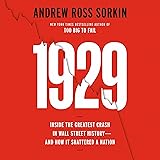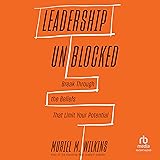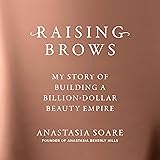In today’s dynamic market, investors often grapple with uncertainty, searching for avenues that offer both stability and growth potential. While traditional assets face headwinds, the commodity sector, particularly gold and industrial metals, presents a compelling case. As highlighted in the accompanying video featuring CNBC contributor Tim Seymour, the real opportunity may lie not just in holding physical gold, but in the strategic advantage offered by gold mining companies themselves.
Seymour makes a strong argument for the extraordinary operational leverage inherent in these firms, suggesting they are poised for significant outperformance. This perspective challenges conventional thinking and encourages a deeper look into the mechanics driving profits in the mining sector, especially as macroeconomic conditions continue to evolve.
Understanding Operational Leverage in Gold Mining Companies
What exactly is “operational leverage,” and why is it so crucial for gold mining companies? Simply put, operational leverage refers to the degree to which a company can increase its operating income by increasing its revenue. In the mining industry, this means that once a company covers its fixed costs (like infrastructure, equipment, and exploration), a slight increase in the price of the metal it mines can lead to a disproportionately larger increase in its profits.
Tim Seymour points to Newmont, the largest gold producer globally and a significant weighting in the GDX gold miners index (representing 13-14% of the index), as a prime example. Newmont’s strategic moves, such as selling off non-core assets to raise cash and authorizing a substantial $6 billion share buyback in July, demonstrate a clear focus on enhancing shareholder value and leveraging their existing operations. These actions are designed to make the company leaner and more efficient, positioning it to capitalize more effectively on rising gold prices. If the company’s earnings per share (EPS) targets for 2026 are anything to go by, even a sideways movement in gold prices could lead to significantly better results.
The operational leverage means that even if gold prices were to experience a 10% pullback, the underlying strength of these companies, particularly those with prudent management, could allow them to weather the storm far better than one might expect. Analysts, Seymour notes, often lag in catching up to the gold price, underscoring the potential for undervalued opportunities in the sector. This lag suggests that the full benefit of current gold prices has yet to be fully priced into many gold mining stocks.
Gold Miners vs. Physical Gold: A Performance Play
When considering an investment in gold, a common dilemma arises: should one invest in the physical metal or the companies that extract it? While physical gold is often seen as a safe-haven asset, Tim Seymour emphatically favors gold miners, particularly in the current environment. The primary reason for this preference lies in the concept of ‘beta’ and the relative performance of miners versus the metal.
Initially, during the first leg of the gold rally, miners were lagging. This underperformance was largely due to inflationary pressures, which increased their operating costs. However, the tide has turned. Over the last two to three months, as the gold rally kicked into high gear, the performance of mining stocks relative to the metal has been striking. This ‘beta,’ a measure of a stock’s volatility in relation to the overall market, has been two to three times that of the physical metal. This means that for every 1% move in gold, miners have moved 2-3% in the same direction, amplifying gains for investors.
This amplified performance highlights the potential for gold mining companies to act as a growth engine within a portfolio, rather than just a defensive asset. The ability of miners to translate higher gold prices into exponential profit growth, thanks to their operational leverage, makes them a compelling choice for investors seeking outsized returns in the precious metals space.
The Evolving Character of Gold’s Rally
The recent rally in gold has exhibited characteristics that deviate from historical patterns, leading some, including Tim Seymour, to describe it as an “un-gold-like move.” Traditionally, gold’s movements were closely tied to factors like the U.S. dollar’s strength or interest rate expectations. However, recent drivers seem to be more thematic and structural.
One significant theme is the substantial increase in central bank demand, particularly from China. Data indicates that China’s gold reserves have reached a 10-year high, even as their holdings of U.S. Treasuries have been falling. This strategic diversification by major global economies provides a foundational demand for gold that is less dependent on traditional financial metrics. Furthermore, ongoing geopolitical uncertainties and a general desire for portfolio diversification by institutions contribute to this robust, albeit unusual, demand. While it’s true that “any fundamental macro headline” can be spun as a reason to buy gold, these underlying structural shifts offer a more concrete rationale for the metal’s enduring strength.
Beyond Gold: Opportunities in Industrial Metals
While gold often captures the headlines, the broader industrial metals sector also presents intriguing investment opportunities, particularly for those looking to diversify their commodity exposure. Metals like copper, aluminum, and platinum are critical for global industrial activity and the accelerating energy transition.
Copper, in particular, has seen extraordinary volatility, often driven by technical factors related to market mechanics like those on the London Metal Exchange (LME) and futures contract squeezes. However, when stripping away short-term fluctuations, a compelling long-term trend emerges. Copper has followed a “great trend line,” mirroring gold’s three-year rally. Its fundamentals are deeply rooted in supply-demand dynamics: long lead times for new mines, complex extraction processes, and geopolitical disruptions affecting supply chains. These factors create an environment ripe for price appreciation, especially with global efforts towards electrification and renewable energy demanding vast quantities of copper.
For investors interested in this space, integrated miners offer an attractive entry point. Companies like BHP and Rio Tinto are global giants with diversified operations that include significant industrial metal production. Freeport-McMoRan, another major player in copper, also provides exposure. While specific company performance can be disappointing at times, as Seymour notes about Freeport, the overall thesis for industrial metals remains strong. A resurgence in global growth, even a modest one (especially from economies like China, which significantly impacts companies like Rio Tinto), could translate into substantial gains for these integrated miners due to their own form of operational leverage and scale.
In summary, the landscape for gold mining companies and the broader metals sector is rich with opportunity. By understanding operational leverage, the nuanced drivers of gold’s rally, and the fundamental demand for industrial metals, investors can position themselves strategically in a market that often outperforms during periods of economic transition and uncertainty.











